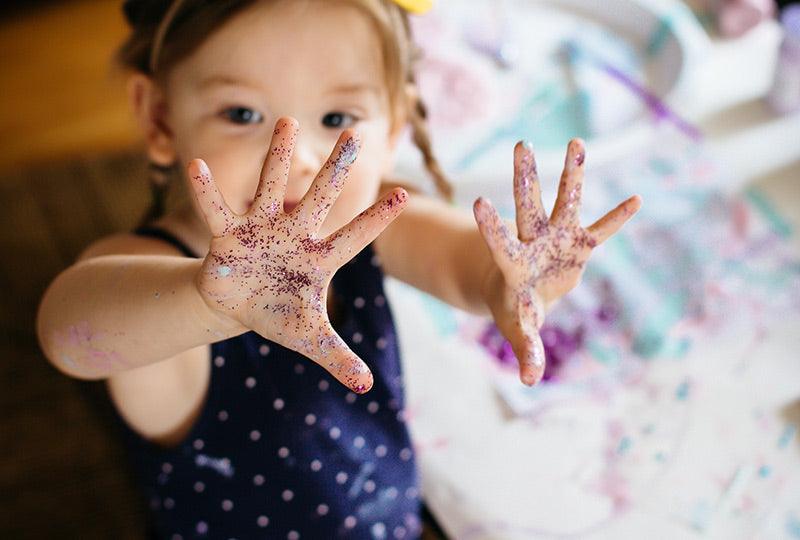Young children swallow lots of strange things.
Kids love glitter. It’s colorful, it’s sparkly, and it makes any event a little more fun. But what is it made of? And what might happen if your child decides to taste it? The good news is that glitter is generally harmless. However, there are a few facts you’ll want to be aware of.
While glitter has, over the years, been made from many different materials, modern glitter is generally made from plastic. It may also include reflective material such as aluminum foil. Small tastes of glitter is generally considered non-toxic and will pass through the stomach without causing harm.
If you notice that your child has ingested glitter, do not panic. Take the product away from the child and wipe their mouth out with a soft wet cloth. You may give them some water. Do not try to induce vomiting.
Most swallowed objects will pass through a child’s digestive system and into their poop without serious complications. It does require a little work on your part because you may have to inspect the diaper to confirm the object has truly passed. In the case of glitter, it’s pretty hard to miss: You will see some glittery poop.
Knowing that most solid objects pass in time, it’s OK to just keep a watchful eye on your child’s stool. If you don’t find what you’re looking for, it may be due to one of two reasons: Either the object passed and you missed it (it happens all the time), or it may have gotten stuck somewhere in your child’s digestive system. If he or she has no symptoms, a call to your pediatrician would be the best place to start. The doctor can advise you on what to do next and where to go.












